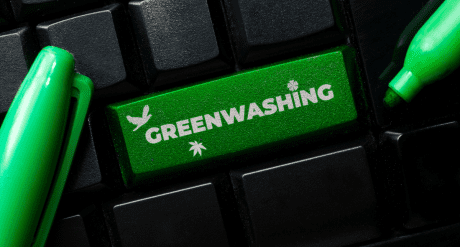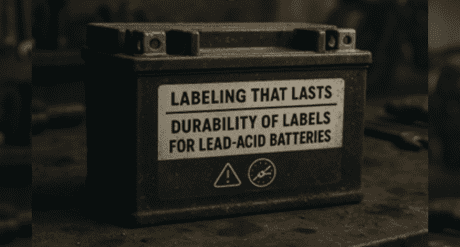
A Cut Ahead: Trending Labeling Regulations In November 2023

The textiles regulatory environment is ever-changing, especially considering chemical, labeling, and extended producer responsibility (EPR) issues that the industry faces today. With a 26% growth in textile regulations since 2020, its more important than ever to stay ahead of changing regulatory requirements.
To help you stay a cut ahead, we gather some of the most interesting recent inquiries from Compliance & Risks customers around trending textile labeling fiber regulations across the world.
Q1) Biocide Use For Textiles & Apparel In Canada
Does Canada have specific requirements that my client needs to adhere to regarding the importation of textile apparels such as shirts and underwear, especially if these products are treated with active biocide or antimicrobial substances to prevent unpleasant odors?
Stacey Bowers, Manager, Global Market Access, answers:
Canada’s Pest Control Products Act and Pest Control Products Regulations may be relevant here.
The Act and Regulations establish requirements for pest control products, including for treated articles, including requiring labeling with a registration number, manufacturer identity, product identity, net quantity, instructions and warnings, as applicable.
Q2) Changes To Egypt’s Import Requirements
Has Egypt has modified its import requirements, including chemical specifications for textiles and apparel?
Stacey Bowers, Manager, Global Market Access, answers:
You’re correct.
In July 2023, the Egyptian Ministry for Trade and Industry enacted Decision No. 197 providing producers and importers with a six-month transitional period to comply with the following Egyptian standards:
- ES 7266 – 1 Safety and health criteria and labelling for textile products Part 1 : dyeing yarns
- ES 7266 – 2 Safety and health criteria and labelling for textile products Part 2 : dyeing, printing or finishing fabric
- ES 7266 – 3 Safety and health criteria and labelling for textile products Part 3 : apparel and home textile
- ES 7266 – 4 Safety and health criteria and labelling for textile products Part 4 : garments
- ES 7266 – 5 Safety and health criteria and labelling for textile products Part 5 : carpets and rugs
Q3) Interpreting Canadian Labeling / Marketing Requirements
Regarding an interpretation of Canadian Labeling/ Marking requirements (Quebec Charter of French language):
If A footwear product is being soldto the North American Market, not explicitely Canada and it includes general information in engilish on the artwork of the shoebox itself, Do we have to print it also in French, if the product is only sent to Canada after buying it in an online shop?
Maria Marecki, Senior Regulatory Consultant, answers:
As the US government indicates, French labeling is typically required as specified in the laws and regulations.
Section 51 of the Charter of the French Language state any inscription on a product, on its container or on its packaging, on a document or object accompanying this product, including the instructions for use and the certificates of guarantee, must be written in French. This rule also applies to menus and wine lists.
Regulation respecting the language of commerce and business gives exemptions, including:
An inscription on a product may be exclusively in a language other than French in the following cases:
- The product is intended for a market outside Québec;
- The inscription appears on a container used in interprovincial or international transportation of merchandise;
- The product is from outside Québec, has not yet been marketed in Québec and is being exhibited at a convention, conference, fair or exhibition;
- The product is from outside Québec, is intended for incorporation into a finished product or for use in a manufacturing, processing or repair operation and is not offered in Québec for retail sale;
- The product is from outside Québec and is in limited use in Québec and no equivalent substitute presented in French is available in Québec; or
- The product is from outside Québec and the inscription is engraved, baked or inlaid in the product itself, riveted or welded to it or embossed on it, in a permanent manner. However, inscriptions concerning safety must be written in French and appear on the product or accompany it in a permanent manner.
Additionally, the requirements of the Consumer Packaging and Labeling Act and Regulations applied to products sold or imported into Canada. “Sell” includes (a) offer for sale, expose for sale and have in possession for sale, and (b) display in such manner as to lead to a reasonable belief that the substance or product so displayed is intended for sale.
Meet Our Experts

Stacey Bowers, Manager, Global Market Access
Stacey Bowers, MILS, is the Manager of Compliance & Risks’ Global Market Access team.
Stacey is a self-described “law nerd” with nearly 20 years’ experience consulting on international consumer products regulations and standards. She has extensive knowledge of analytical, labeling, safety and testing issues applicable to apparel, cosmetics, food, food contact articles, footwear, giveaways/ incentives/ premiums, home textiles, jewelry, juvenile products and toys.
Stacey and her team of 10 librarians and lawyers produce current, comprehensive and customized research to address strategic business needs for retailers and manufacturers, including entering new geographic markets; facilitating education and training throughout the supply chain; and development of global best practices around regulatory compliance.

Maria Marecki, Senior Regulatory Consultant, Compliance & Risks
Maria Marecki is a Senior Regulatory Consultant at Compliance & Risks.
She has over a decade of experience as a research consultant compiling customized products to address strategic business needs for retailers and manufacturers, including entering new geographic markets and development of global best practices around regulatory compliance.
Her experience in product safety and labeling spans a wide range of products including children’s products, apparel, footwear, electronics, and cosmetics.
Stay Updated With Global Textile Labeling Regulations
Our cheat sheets are designed to empower your brand with the knowledge needed to meet labeling requirements, safety standards, chemical restrictions, testing and certification prerequisites, and eco-conscious waste management guidelines.








